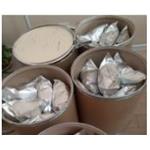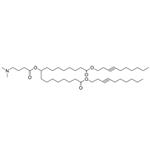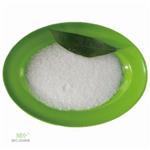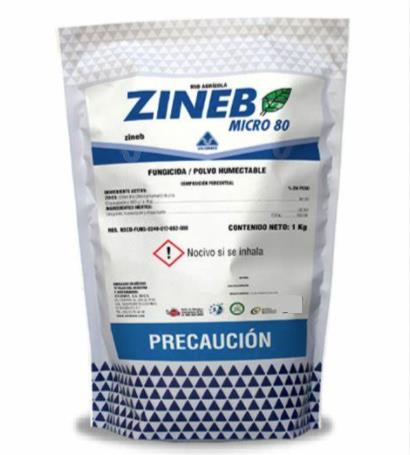Toxicity of the herbicides diuron
Mar 15,2023
Diuron is a substituted phenylurea used as a herbicide to control broadleaf and grass weeds and as a biocidal antifouling agent. Diuron is carcinogenic in rat urinary bladder and toxic to the reproductive system of oysters, sea urchins and lizards. The few studies carried out in human cells do not include the genotoxicity of diuron.

Toxicological Effects:
Acute toxicity: Diuron is slightly toxic to mammals. The oral LD50 in rats is 3400 mg/kg. The dermal LD50 is greater than 2000 mg/kg [4,8]. Some signs of central nervous system depression have been noted at high levels of diuron exposure. For humans, the only reported case of acute, oral exposure to the herbicide produced no significant symptoms or toxicity
Chronic toxicity: Male rats given extremely high doses of diuron over a 2-week period showed changes in their spleen and bone marrow. Other chronic effects attributed to moderate to high doses of the pesticide over time included changes in blood chemistry, increased mortality, growth retardation, abnormal blood pigment, and anemia. When fed small amounts of diuron in food for 2 years, animal species showed no adverse effects.
Reproductive effects: Daily low doses of diuron fed to female rats through three successive generations caused significantly decreased body weight of offspring in the second and third litters. The fertility rate remained unaffected. It is unlikely that diuron will cause reproductive effects in humans at expected levels of exposure.
Teratogenic effects: Diuron is teratogenic at high doses. Administered to pregnant rats on days 6 through 15 of gestation, it produced no birth defects in the offspring at doses of up to 125 mg/kg/day. However, doses of 250 mg/kg/day caused wavy ribs, extra ribs, and delayed bone formation. There were also weight decreases in offspring at 500 mg/kg/day. There was no increase in the severity of the rib deformation at this higher dose [4,8]. Pregnant mice given very high doses of diuron (nearly 2000 mg/kg/day) exhibited reproductive and embryotoxic effects. Developmental effects were found in their offspring.
Mutagenic effects: Diuron does not appear to be mutagenic. The majority of tests have shown that diuron does not produce mutations in animal cells or in bacterial cells.
Carcinogenic effects: Limited evidence indicates that low level exposures to diuron does not cause cancer.
Organ toxicity: Low doses of diuron over extended periods of time can cause enlargement to the liver and the spleen.
Fate in humans and animals: Diuron is excreted in the feces and urine of test animals. Breakdown of the compound is similar in animals, plants, and soil. Cows fed very low doses of diuron in their diets had small amounts of residues in whole milk. Cattle fed small amounts accumulated low levels of diuron in fat and muscle, liver, and kidney.
- Related articles
- Related Qustion
- Toxicity of diuron metabolites in animal and human cells Feb 14, 2025
Diuron, 3-(3,4-dichlorophenyl)-1,1-dimethylurea, is a worldwide used herbicide whose biotransformation gives rise to three metabolites.
- Diuron Jun 20, 2022
Diuron is a systemic herbicide with a certain contact killing activity, which can be absorbed by the roots and leaves of plants, and can be absorbed by the root system.
- Herbicide---Diuron Oct 15, 2021
Diuron is used as an herbicide for weed control on noncrop lands and agricultural crops such as asparagus, pineapple, cotton, and sugarcane.
Titanocene Dichloride is a useful reagent for a wide variety of synthetic transformations. It can be used with Grignard reagents for the reduction of aryl and vinyl halides.....
Mar 15,2023Catalyst and Auxiliary?Zineb is a carbamate fungicide used on edible crops and ornamentals. It has a low aqueous solubility, is relatively volatile and is not expected, based on its physico-chemical propoerties, to leach to groundwater.....
Mar 15,2023Chemical pesticides ?Diuron
330-54-1You may like
- Diuron
-

- $0.00 / 25kg
- 2025-04-01
- CAS:330-54-1
- Min. Order: 1kg
- Purity: 99
- Supply Ability: 20tons
- A6
-

- $0.00 / 1g
- 2025-03-31
- CAS:
- Min. Order: 1g
- Purity: 98%
- Supply Ability: 1g/bottle , 10g/bottle, 100g/bottle
- Diuron
-

- $0.00 / 25KG
- 2025-03-21
- CAS:330-54-1
- Min. Order: 1KG
- Purity: 99%
- Supply Ability: 50000KG/month






